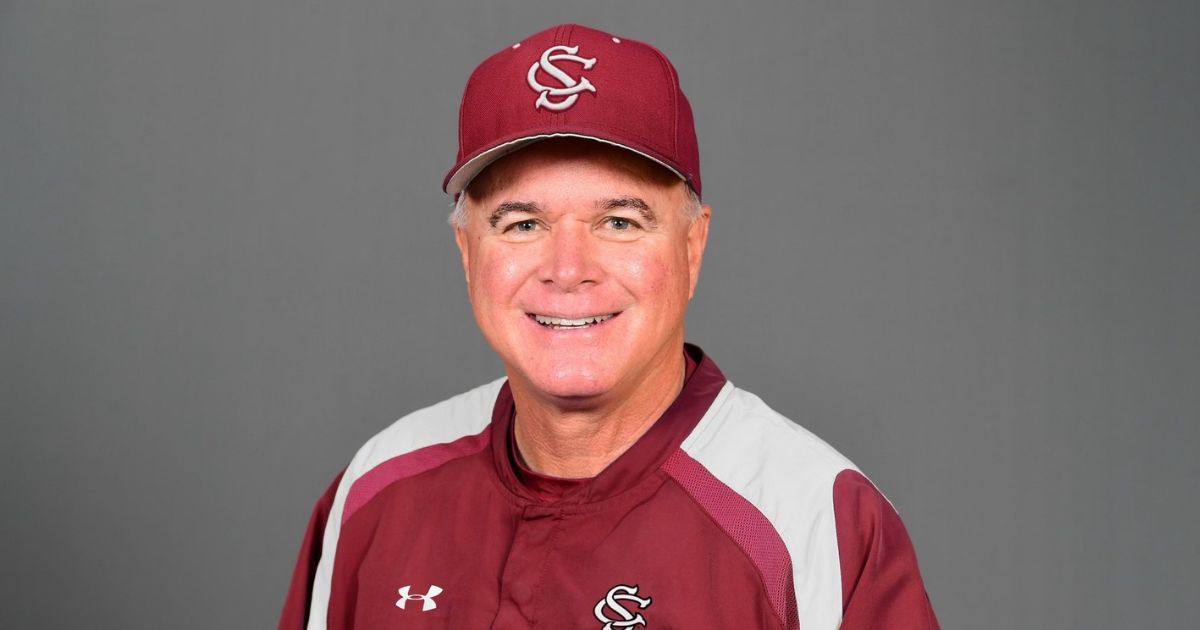Paul Mainieri assesses the redesigned roster for South Carolina baseball, emphasizing increased depth, talent infusion, and preparedness to
Paul Mainieri begins by highlighting the sheer volume of change that has swept through the Gamecocks program following his arrival. He often underscores that he walked into a roster in transition—not just in terms of losses, but more meaningfully in terms of opportunity. South Carolina saw key departures, including high-impact catcher Cole Messina and reliable arms like pitchers Eli Jones and Garrett Gainey, all drafted in 2024 ). But rather than framing it purely as attrition, Mainieri views it as a blank canvas—a chance to build depth, inject fresh talent, and recalibrate the team to align with his philosophies.
The new roster reflects a strategic mash‑up of transfer portal acquisitions and a selectively curated freshman class. Mainieri praises the portal moves for their immediate impact, noting the arrivals of JUCO talents like Aaron Jamison and Caleb Hoover, and transfers Tyler Bak, Ethan Lizama, and Luke Yuhasz—each selected to bolster specific areas. On the pitching side, he admits one slot remains open, but emphasizes an improved process: a structured rebuilding of the development pipeline, bolstered by advanced analytics and technology
He speaks specifically about bullpen and rotation contributors: JUCO addition Aydin Palmer, described as a “strike‑throwing machine,” and Jackson Soucie, alongside experience-filled D‑I transfers Jarvis Evans Jr., Wyatt Evans, and Ashton Crowther. The goal, he says, was to blend proven performance with raw upside—matching arms who can chase strikeouts with those who can stifle hitters via consistency
Mainieri singles out freshman KJ Scobey, praising his performance with the Lexington County Blowfish over the summer. Scobey has earned a legitimate case for the starting shortstop job, blending defensive reliability with plate discipline That’s a stark contrast to 2024, when the team relied largely on transfers like Ohio State’s Henry Kaczmar and returning sophomore Will Tippett to man up the position
Catchers have also been a significant point of focus. With Messina gone, the team pivots to a mix of fresh and experienced hands. Transfer Max Kaufer from Texas A&M brings a solid defensive approach, honed further by summer play in the Cape Cod League. Mainieri notes Kaufer fits exactly the profile they sought in a backup, especially defensively ). They’re also maintaining depth behind the plate with sophomore Ryan Bakes, who posted a .375 OBP in limited action, and senior Talmadge LeCroy, who’s transitioning from third base back to catcher—having impressed Mainieri in Cape Cod performances
Among the most upbeat narratives he offers concerns redshirt sophomore pitcher Eli Jerzembeck. After missing the entire 2024 season due to injury, Mainieri reveals, Jerzembeck’s return has surpassed all expectations. He describes his bullpen sessions as “Friday‑night starter” quality, combining velocity and movement in a way that could anchor the rotation . Those comments aren’t just motivational; they signal an intent to structure the staff around genuine high-end arms rather than mere innings eaters.
But it’s more than individual players. Mainieri is equally keen on depth—the kind that carries a program through the brutal stretch of SEC play. He states that he walked into a situation with roughly 48 fall rosters that need ditching down to 40 by Opening Day, and he hasn’t been shy about giving every athlete an actual shot, both in fall camp and early scrimmages . His self-declared philosophy is simplicity: “let them just play”—focusing on refining fundamentals first, then layering in situational strategy .
By entertaining 27 fall workouts—including two scrimmages—Mainieri demonstrates his belief in live reps. These are more than drills; they’re experimental labs where he tests rotations, lineup balance, and individual readiness without sacrificing structure. He’s not forcing high-level tactics—he’s intent on letting base skills emerge under low-stakes pressure .
Those scrimmages are also about revealing the true competitive pieces. He notes that in early weeks, the focus is not on “strategy,” but on seeing who responds to game‑like stress—who fights through late-game situations, who steps up defensively, who pitches under pressure .
Recruiting remains another of his pillars. Beyond the current roster moves, Mainieri reports strong momentum with early recruiting for 2026. That suggests a long‑term vision, albeit one anchored in today’s competitiveness. Mainieri is quickly rebuilding both the present and the future.
Tactically, Mainieri stresses balance. He wants hitters who can counter aggression with discipline, pitchers who can locate and mix, catchers who can frame—and he’s assembling that mix through targeted transfers, technologically driven development, and internal competition
Opening Day is scheduled for February 13, 2026, and they’ve been negotiating series already—Northern Kentucky is the current rumor, although no deal’s done yet ( These logistical arrangements matter; Mainieri understands how the early schedule sets psychological tone. He wants his team to open confident, tested, and ready to punch.
Not lost in his public narrative is the mention that one key freshman—Brandon Cromer Jr.—is redshirting due to Tommy John surgery, a smart medical redshirt to protect both his arm and program health . That’s a small but critical signal to incoming talent that South Carolina will prioritize athlete health over early-season heroics.
On the peripherals of roster talk, Mainieri makes a point to attend Coaches for Charity events, connect with honored alumni like Jake McCoy, and show that the program will have a public-facing presence beyond Founders Park
). That’s part of rebuilding institutional pride and community connections.
All told, Mainieri’s assessment builds two consistent pillars: depth and purposeful infusion of talent. Depth comes through 40-plus competitive spots on the fall roster, scrutinized through scrimmages and high volume reps. Purposeful infusion lies in selecting the “right” transfers—ones with polished tools or high ceilings—and supplementing them with freshmen whose recruitment suggests long-term value. There’s no illusion of overnight transformation. He’s clear that continuity through the SEC will require consistent, battle-tested layers of talent.
Another layer to this is staff restructuring. Although not strictly part of the roster, Mainieri retained Monte Lee as associate head and hitting coach, while bringing in new pitching coach Terry Rooney (also his recruiting coordinator) and assistant coach John Hendry. That gives the revamped roster strategic pitch-and-hit cohesion. Stability in hitting meets fresh philosophy in pitching—evidence of his drive to rebuild both sides of the ball simultaneously.
Perhaps most revealing is Mainieri’s tone when asked about the team’s preparedness. He acknowledges they’re not finished—yet. There’s still one pitching spot open, and likely more adjustments ahead. But he frames that reality positively: this is a work in progress destined to finish strong. He’s not predicting championships, but readiness.
What emerges is a coherent message: this is a deeper, more resilient, and better-balanced Gamecock roster. One with high-upside arms, disciplined bats, strategic recruitment, advanced development systems, a modern support staff, and a competitive mindset evinced through open competition. Mainieri’s track record—500+ wins at Notre Dame, national title at LSU—and now this inaugural season in Columbia create context: he knows how to architect programs, winning or otherwise.
In sum, Mainieri’s view on the redesigned roster is clear and confident. He sees more bodies, more talent, more structural support, and higher competitiveness. He’s not sugarcoating the SEC’s ruthlessness, but he believes this is a roster built to handle it. Depth is not just a buzzword—it’s the backbone, from catchers to corners, freshmen to frontline arms.
That’s not hype; it’s strategic shaping. And yeah, while no one’s touting the College World Series, Mainieri is building a team that won’t just show up in February and March—they’ll be there to fight in May. That’s his measure of preparedness, and it’s what he sees in this newly-forged Gamecock roster.



